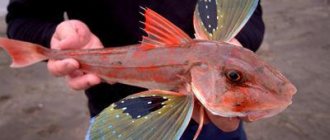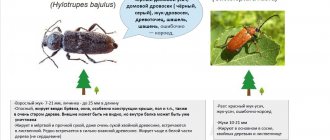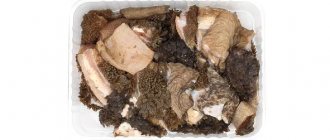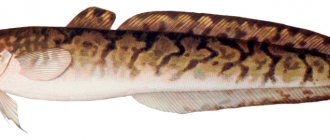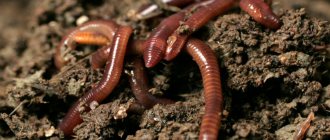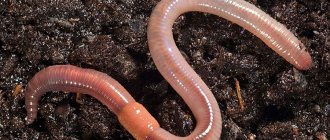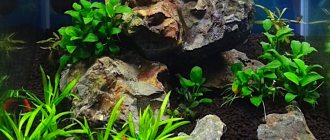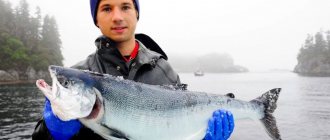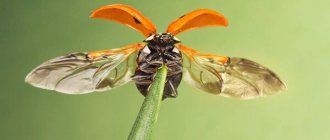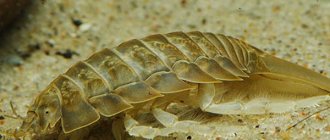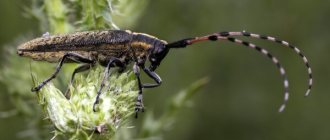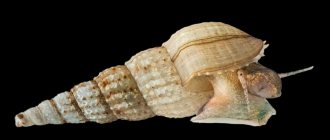A favorite among many, miniature crayfish are one of the most popular types of seafood in the world. They are found in both fresh and salt sea water - the inhabitants of different seas differ in size, color and a number of other properties.
If you look at an individual shrimp, it is easy to understand that it belongs to crustaceans, which are valued for their rich protein and very easily digestible meat. Perhaps this is the main secret why different types of this product are so in demand among food lovers around the world.
Shrimp are not only tasty, but also very healthy
Types of shrimp
Depending on their habitat and a number of other features, shrimp are divided into different species. In total, scientists have identified more than 2,000 species of these amazing marine inhabitants, but not all of their names are known even to gourmets. Wikipedia is also unaware of most of them, and such details make no sense to most people. It is important to know the main types and their photos.
Based on their habitat, shrimp are classified into freshwater, marine, and farmed aquaculture shrimp. Their main differences are in color, size, and toughness of the meat. The taste changes slightly, but for many this aspect is also important.
For the convenience of choosing shrimp for specific dishes, the following classification is accepted in stores and on the Internet:
- Northern
- Brindle
- Royal (vannamei)
- Nerd
The smallest of the popular shrimps (up to 11 cm in length), they are very common. You can easily find them in any supermarket. The place where they were caught is the northern waters of the Atlantic. The characteristic difference between these relatively small shrimp is that only they can see eggs under the abdomen; all other species spawn directly into the water. Of all shrimp supplied to Russia, only about 25% are cold-water river northern shrimp.
This variety of warm-water shrimp is much larger than many of its relatives. They also have characteristic dark stripes on their carapace, reminiscent of a tiger's coloration. Tiger shrimp live exclusively in warm water and can reach 40 cm in length. They are both caught in the sea and raised on farms. They are not boiled before freezing, because after cooking, the shell loses its tiger color and, like all other crustaceans, turns red.
Tiger shrimp
For head-on shrimp, size specifications have been adopted throughout the world. The numbers of these calibers indicate how many individuals are represented in one kilogram of frozen raw materials. For tiger shrimp, calibers such as 13-15, 16-20, 21-25 are suitable - that is, in a kilogram bag there will be from 13 to 25 pieces of shrimp.
A type of predominantly artificial breeding, the most popular throughout the world and quite expensive. Also a warm-water species, they live in the seas of Asia. Such shrimps are larger than their sea counterparts - their sizes vary between 10-25 cm. They are often sold boiled and frozen - which means that the product can be simply defrosted for consumption. Vannamei shrimp tastes a little sweeter than others.
This is the name of large comb shrimp that live in the Russian Far Eastern seas. This is a deep-sea species and is not as easy to catch as many others. Their meat tastes like crab pulp. Juicy and sweetish, the meat of live shrimp is eaten even raw, but for safety it is recommended to boil it. In some cases, botan shrimp can reach 30 cm, and the weight of such shrimp is about 160 g.
Shrimp nerd
Population
Due to high fertility and the ability to self-regulate, the shrimp maintains its population at a sustainable level. Even natural enemies, low larval survival rates, and industrial fishing do not cause much damage to the population.
The following features are distinguished:
- When there is a significant reduction in the number of arthropods, individuals begin to reproduce more actively.
- If there is a shortage of food, then females give birth to much smaller offspring.
- The highest quality are arthropods grown in clean, cold water and in a natural environment.
Tiger shrimp is large in size, unusual in color, and has a high meat content. It grows up to 30-40 cm long, green in color, with noticeable dark stripes throughout the body. They are grown on special farms, which makes it possible for suppliers and manufacturers to supply stores and supermarkets with goods. There you can find both fresh frozen shrimp and chilled, boiled, frozen or canned ones.
The northern shrimp is called chilim, it is small in size, up to 6 cm. However, it tastes simply amazing; you can only buy it boiled - frozen.
Composition and calorie content of shrimp meat
In addition to the huge protein content - up to 20% of the total mass of pulp in raw specimens - shrimp are also distinguished by the excellent bioavailability of the substances present in its composition. Objectively speaking, shrimp meat is very rich in vitamins and microelements. In particular, they contain the following substances and their properties:
- Vitamin B12 is necessary for good appetite, energy and vigor, and good memory. It also prevents the development of anemia.
- Vitamin E - helps in tissue regeneration and blood sugar control.
- Sodium - helps maintain blood osmotic concentration.
- Phosphorus is important for the growth and mineralization of bones and teeth.
- Chromium is necessary for the breakdown and absorption of fatty compounds.
How many calories are in shrimp? The calorie content of boiled shrimp is about 95 Kcal per 100 g of product.
What is their chemical and nutrient composition? The indicators of BJU and KBJU vary depending on the type - you will find out how many carbohydrates, fats and proteins a particular product contains on its packaging.
Benefits of shrimp
The great benefits of shrimp for men, women and children lie in their whitish, protein-rich meat. At the same time, if you cook shrimp correctly, then the crispy chitinous shell that is part of the animal’s structure can become a useful addition to the diet. It is chitin that can become an analogue of plant fiber, which is not digested in the stomach.
However, all discussions about the benefits of shrimp should begin from the moment of choosing a suitable product. Only those shrimps that have grown in wild waters or on farms with an organic approach to the cultivation of crustaceans can be called definitely useful.
A valuable protein with excellent bioavailability, shrimp is ideal for those who are limiting their consumption of red meat, following a Mediterranean diet, following a flexitarian approach to their diet, trying different ways to lose weight, or simply want to eat a more varied, healthy and delicious diet.
Here are a few more reasons to at least occasionally include shrimp dishes in your menu:
- These seafood sufficiently contain folic acid, which is in short supply in almost all inhabitants of the planet. It is especially important to adjust the level of folate in the body for women of fertile age. Since any beneficial substances are much more efficiently absorbed by the human body when taken with food, it makes sense not to limit yourself to pills during pregnancy planning and gestation, but to additionally eat foods with folic acid.
- It is important to include shrimp in the diet from the age of 40 - this is a powerful prevention of cardiovascular diseases.
- This product is indispensable for normalizing weight. It will be delicious and completely low-calorie!
- For libido function, shrimp is one of the recommended foods. Enjoy life to the fullest by simply eating wisely.
- Note to athletes: eating shrimp regularly is important if you are building muscle tissue structure. The proteins present in crustaceans are ideal for the development of strong muscles. We should take note: shrimp is exactly the product that forms the structure of muscle tissue. Proteins and proteins in the composition are what you need for strong muscles.
Reproduction
All shrimp are hermaphrodites, i.e. bisexual. The formation of male and female glands occurs over different periods of time. Sexual maturity of a young shrimp begins with becoming a male and only after three years does it become a female. Eggs at the formation stage look like a yellow-green mass.
Individuals mate very quickly, eggs soon appear, which subsequently become larvae. The process of larval formation takes from 10 days to a month.
The larvae are not capable of independently searching for food and lead a sedentary lifestyle.
How can shrimp be dangerous?
It is important to understand that wild-caught shrimp and farmed shrimp differ significantly in more than just size. They have a radically different composition of meat, which depends on the nutrition of the individuals during cultivation. No one is recommended to eat raw or cooked shrimp that have grown in environmentally unfavorable waters. They have an extremely high allergic potential. Many producers raise crustaceans using antibiotics, superphosphate, caustic soda and many other chemicals that accumulate in shrimp meat and end up in dishes that are actually supposed to be healthy. In fact, this is real harm to the body.
It is important to check the conditions for catching shrimp so as not to harm the body.
Shrimp meat immediately after catching can be treated with pyrophosphates to avoid moisture loss. Such manipulation should always have a certificate - only if done correctly, it does not affect the quality of the product. If the processing was carried out by non-professionals, using low-quality chemicals, the meat may either become too soft and soapy or rubbery and tough. Often in this case a metallic taste appears.
- It is important to completely remove shrimp from the diet if episodes of food allergies were noted on the days of their consumption, or manifestations of intolerance were identified. If the body does not tolerate seafood well, you should exclude it from the diet for 3-4 months, and then, if desired, carefully introduce it into the menu, gradually and without excessiveness.
- If you know you are allergic to tropomyosin in shrimp, eating shrimp may cause nasal congestion and skin rashes.
- For people diagnosed with atherosclerosis in the acute phase, it is important to understand that shrimp contain quite high cholesterol - about 200 mg per 100 grams of product.
Shrimp are stored fresh and cooked for only a short time - it is important to correctly determine the degree of their freshness. If there is the slightest sign of a poor-quality product, spoilage of dishes with shrimp - the appearance of a pronounced smell of fish or shellfish, the presence of a damaged shell or black spots on the surface - you should refuse to eat it.
How to select and store shrimp?
Shrimp are an amazing delicacy, but only if you choose them correctly. Tender, very protein-rich meat of any type of shrimp is extremely sensitive to damage and violations of storage rules. The slightest inaccuracies in the choice of temperature during freezing, or disruption of the cold chain during storage or transportation, quickly and not in the most favorable way affect the quality of the product. Here are some selection recommendations from our experts:
- It is important to buy shrimp in labeled packaging. It must indicate the manufacturer's brand, production date and shelf life.
- The plastic of the packaging should not be painted reddish - this is a popular method for masking a low-quality product.
- When purchasing frozen shrimp, always make sure there is not too much snow or ice in the package. Never buy shrimp that have been crumpled into one monolithic lump! This indicates that the product has been repeatedly re-frozen. It is important to inspect each individual when purchasing, and if you don’t like something, just leave the packaging in the store.
- The shell of a quality shrimp, whether fresh or frozen, should not be damaged. A black spot on it is a reason to refuse the purchase.
- The angle at which the tail of a large shrimp is twisted is also very revealing. If it is twisted tightly enough, it has been frozen as fresh as possible. If the corner is straight, it means that more than 5 hours have passed between catching and boiling for subsequent freezing. This is not directly proportional to poor quality, but we recommend that you refrain from purchasing such shrimp.
- Do not buy boiled-frozen shrimp, the meat of which has a yellowish tint.
Choosing the right shrimp is the key to a delicious dish
The best guarantee of product freshness is the vital activity of shrimp. When properly stored and transported, shrimp remain alive for 20 hours after catching. If storage in ice was immediately organized, the permissible storage period increases to 3 days. After this period, protein breakdown begins and a sharp drop in taste properties begins. For residents of areas far from coastal areas, it is better to give preference to deep-frozen products, which, at the right temperature, preserve the optimal quality of shrimp. If in central Russia, far from the fishing grounds, buyers are offered “fresh” shrimp, sellers usually mean defrosted products, “defrost”. Such shrimp are susceptible to spoilage even more than fresh ones, which means that you should be especially careful when purchasing it.
You have already bought delicious and high-quality shrimp, but how to store them? Just put it in the freezer? We also have an answer to this question!
The length of possible consumption of shrimp for food depends on the accuracy of compliance with storage conditions. Fresh seafood is a storehouse of nutrients and microelements, but spoiled seafood is a real problem for the body. If the temperature and storage conditions are violated, shrimp spoil very quickly.
How to store shrimp in the refrigerator?
Temperature conditions and the type of packaging used are the two main factors that matter when storing shrimp in the refrigerator.
- If you place shrimp with ice in the refrigerator, it is better to cover the container with them with a towel so that the moisture does not evaporate too quickly.
- When purchasing shrimp by weight, transfer them from bags to foil or parchment. Polyethylene is not the best option for defrosted shrimp.
- If you bought seafood in vacuum packaging, it is best to place it in the refrigerator in this form.
- Do not store cooked shrimp in the refrigerator for more than three days, regardless of the cooking method.
- Choose the coldest zone of the chamber for placement. It is advisable to place shrimp away from other products - they have a specific smell.
How to store shrimp in the freezer?
- The optimal shelf life of deep-frozen shrimp in the freezer is 6 months. After six months, both the taste and nutritional characteristics of the product will no longer be the same. It is not worth storing frozen for a year. Such shrimp can be harmful.
- Defrost shrimp in a standard refrigerator compartment, not in a bowl outside. If you need to defrost them quickly, place the frozen shrimp in a container of clean water and then place it in the refrigerator. Water will help the freeze go away faster.
Natural enemies
A large number of shrimp die in the larval stage. Arthropods are the favorite food of whale sharks, whales, and other planktivores. Shellfish, seabirds, fish, and some mammals also eat shrimp.
She is completely unarmed. The only way to escape from the enemy is to escape; she can hide in a thicket of algae.
Another feature is the possibility of camouflage. The shrimp imitate the color of the bottom and adapt the color of quinine to its surroundings. Animals are caught on an industrial scale. Producers extract from 2 to 3 million tons of arthropods annually.
Using shrimp in cooking
What do you cook with shrimp? Why aren't they cooking? Food with these seafood becomes very tasty!
Most often, perhaps, they are used as an independent dish or the basis of a nutritious dinner, lunch and even breakfast. To do this, crustaceans can be boiled, baked, fried with vegetables or sauces, herbs and spices.
They are also often used in soups, appetizers, salads, and added to pasta or risotto.
The most interesting recipes with shrimp are usually found in the cuisines of countries on the coasts of which seafood is caught. For example, in Asian countries and island countries, shrimp are added to fried noodles and various Korean and Japanese spicy dishes.
The variety of culinary possibilities that opens up to those who have shrimp in their refrigerator is unlimited.
Differences in feeding for a community aquarium and for a shrimp tank
When kept together with fish, aquarium shrimp act as orderlies. They eat the remains of fish food, dying parts of algae, as well as algae on glass and plants. Aquarium shrimp often eat dead fish, but for the breeder’s safety it is better to avoid this.
There are many food options available in a community aquarium. For this reason, separate feeding should be done very rarely and in small quantities. Otherwise, crustaceans will abandon their natural function - cleaning the aquarium.
Keeping pets separately in a “shrimp tank” requires a completely different approach to feeding them. Only plants, algae and microorganisms can be used as food. However, in this case, growth slows down, the quality of molting, coloring and reproduction deteriorate.
To avoid possible problems, the food must be complete. The simplest option is to use specially developed formulations that include the necessary vitamins and elements.
Shrimp food must be complete
Shrimp recipes
Now about the most delicious! We share recipes for interesting dishes with shrimp, as well as tricks for pre-processing them.
Important:
Any shrimp, including large ones, can be cooked and eaten directly in the shell, but it is more common to use peeled crustaceans for this. To clean the shrimp yourself, you need to separate the head from the body, gently pull along the body to remove the legs, remove the shell and tail. If the shrimp's esophagus is visible (usually a dark line along the spine), remove that too.
We have chosen for you recipes for boiled and fried shrimp that will be easy to repeat at home, and the effect they will have on your appetite and the sense of beauty of your loved ones will be amazing! Bon appetit!
Risotto with shrimp
This recipe will appeal to fans of Italian cuisine. And how delicious it looks - just class!
Grocery list:
- 30 g butter;
- 400–500 g peeled shrimp;
- half an onion;
- 2 cloves of garlic;
- 85 ml dry white wine;
- 270 g arborio rice (this is a special type of rice for risotto, which gives the necessary density and consistency of the dish);
- 750 ml vegetable or chicken broth;
- 250 ml milk (take out of the refrigerator in advance);
- 40 g Parmesan cheese;
- 150 g green peas, frozen or fresh;
- salt and pepper to taste.
Cooking steps:
- Melt 10 g butter in a deep frying pan or saucepan over medium heat. Fry the shrimp in one layer on it, without overcooking. Add a little salt. Fry for about one and a half minutes, then turn over and continue to fry for another minute. Remove and place cooked shrimp on a plate. So cook all the shrimp one by one.
- Peel the onion and garlic, finely chop them (you can do them together). In the bowl where the shrimp were cooked, melt another 10 g of butter, and then fry the onion and garlic in it until transparent. Pour in the wine, wait until it boils, and then leave to cook until the alcoholic smell dissipates.
- Pour the rice into the container and stir in the wine for about half a minute. Then add two-thirds of the chicken or vegetable broth to the pan, turn the heat to low and leave until it boils.
- Once boiling, pour the milk and the rest of the broth into the risotto. Stir and simmer for another 3 minutes. Stir again and leave for 2 minutes until done.
- Grate the Parmesan and add it to the dish. Also add peas. Season with salt and pepper, place the shrimp in the frying pan, add all the remaining butter and stir thoroughly. Remove from heat. You can eat!
Caesar salad with shrimps
A classic recipe with a marine twist!
Grocery list:
- 6 handfuls of lettuce - iceberg or romaine;
- 300 g shrimp or 10-12 pieces of king shrimp;
- 7-9 cherry tomatoes;
- 3 tablespoons grated Parmesan;
- 200 g baguette;
- 1 clove of garlic;
- 5 tablespoons Caesar sauce;
- 1 tablespoon oil for frying.
Cooking steps:
- Cut white bread or baguette into cubes, mix with chopped garlic and salt in a deep bowl. Place on a baking sheet, bake until golden brown at 180 degrees.
- Clean the defrosted shrimp and fry in vegetable oil on both sides.
- Grate the Parmesan cheese.
- Tear the lettuce leaves into pieces, place them on a platter, carefully spread about a third of the dressing on the leaves, and sprinkle with Parmesan cheese.
- Place the tomato halves on the leaves.
- Add shrimp.
- Pour over all the remaining dressing, add Parmesan and croutons. The salad is ready to serve!
Cheese soup with shrimp
This is the case when a familiar dish becomes a gourmet choice! Will this soup definitely get into your heart?
Grocery list:
- 15 large shrimp;
- a tub of good quality processed cheese;
- 1 carrot;
- 3 potatoes;
- 1 onion;
- a little herbs and chopped garlic;
- salt to taste.
Cooking steps:
- Chop all the vegetables and throw them into boiling water in a saucepan.
- After 10-15 minutes of cooking, reduce heat and add cheese to the pan.
- Clean the defrosted shrimp and fry in vegetable oil on both sides.
- Add salt and pepper, turn off the soup. Add cooked shrimp, herbs, and garlic to the pan.
- You can serve the dish to the table!
Control using a feeder
The use of special feeders helps to maintain the cleanliness of the aquarium. They can be glass, metal and plastic. You can use suitable available equipment.
The simplest design consists of a transparent container like a plate and a long tube placed in it, one end of which is above the surface of the water. Food is poured through a tube. This design also makes it easy to control the amount of food.
Adults can eat this way; for young animals it is recommended to use powder.
Popular questions and answers about shrimp
In this section we will answer the questions that customers often ask us.
Is it possible to buy artificially grown shrimp?
The breeding of shrimp in artificial ponds has long been practiced by residents of warm countries, who eat mainly seafood. Shrimp fry are placed in small ponds, fed and waited until they grow to the desired size. About 55% of the shrimp on the world's shelves are farmed. This makes it possible to standardize the size of shrimp and minimize fishing costs.
Farmed shrimp are also tasty and nutritious
It is impossible to answer which shrimp is better. The fact is that with a responsible approach to aquaculture breeding, the benefits and taste of artificially grown shrimp remain worthy. Considering that a significant portion of warm-water shrimp are already farmed in ponds, and only northern shrimp are caught wild, it is safe to say that farmed shrimp will only become more numerous.
What are cocktail shrimp?
These are special small shrimp that are used for pizza and salads and are one of the most popular types. Their weight in purified form does not exceed 2-3 grams.
What are the best shrimp to buy?
It is allowed to purchase shrimp in block packaging, by weight, glazed, peeled and in the shell. Any ones you like. The main thing is that the product is of high quality. We have in our assortment only shrimp that will delight you with their appearance, taste and reasonable price. On the website all products are presented with a description, you can also see photos and videos. Place your order, and if you have any questions, write us a message or call.
Habitat
The habitat of shrimp is seas and oceans; arthropods are ubiquitous.
The young crustacean feeds exclusively on the purest plankton, which makes its meat a particularly valuable and high-quality product.
Scavenger shrimp feed on any organic debris. Favorite delicacies include plankton, juicy algae leaves, soil particles, and young fish. The organs responsible for smell and touch, in the form of antennae, help the shrimp search for food.
Some individuals search for vegetation in the ground, others at the bottom.
Due to their low vision, arthropods see practically nothing in the water at a long distance.
The sense of smell helps to find food and hunt. With the help of developed jaws and mandibles, the shrimp grinds and crushes the prey; this process can take 2-3 hours.
As homemade food, shrimp are fed with a prepared mixture or boiled vegetables and fresh fruits. The shrimp eats leftover food from aquarium fish.
